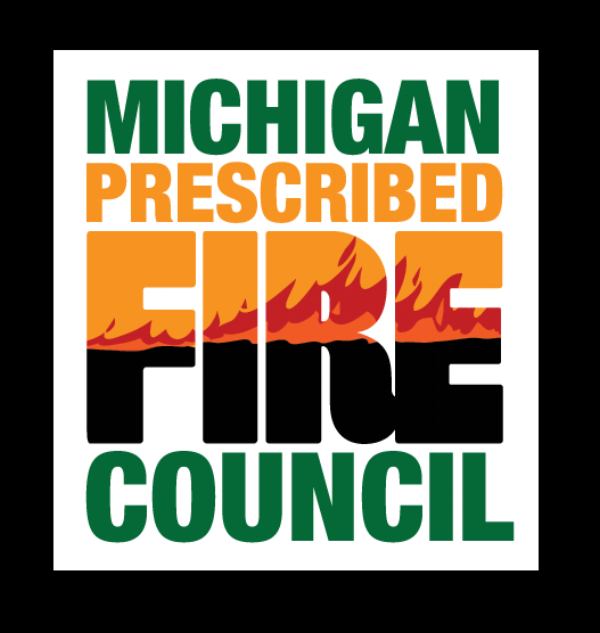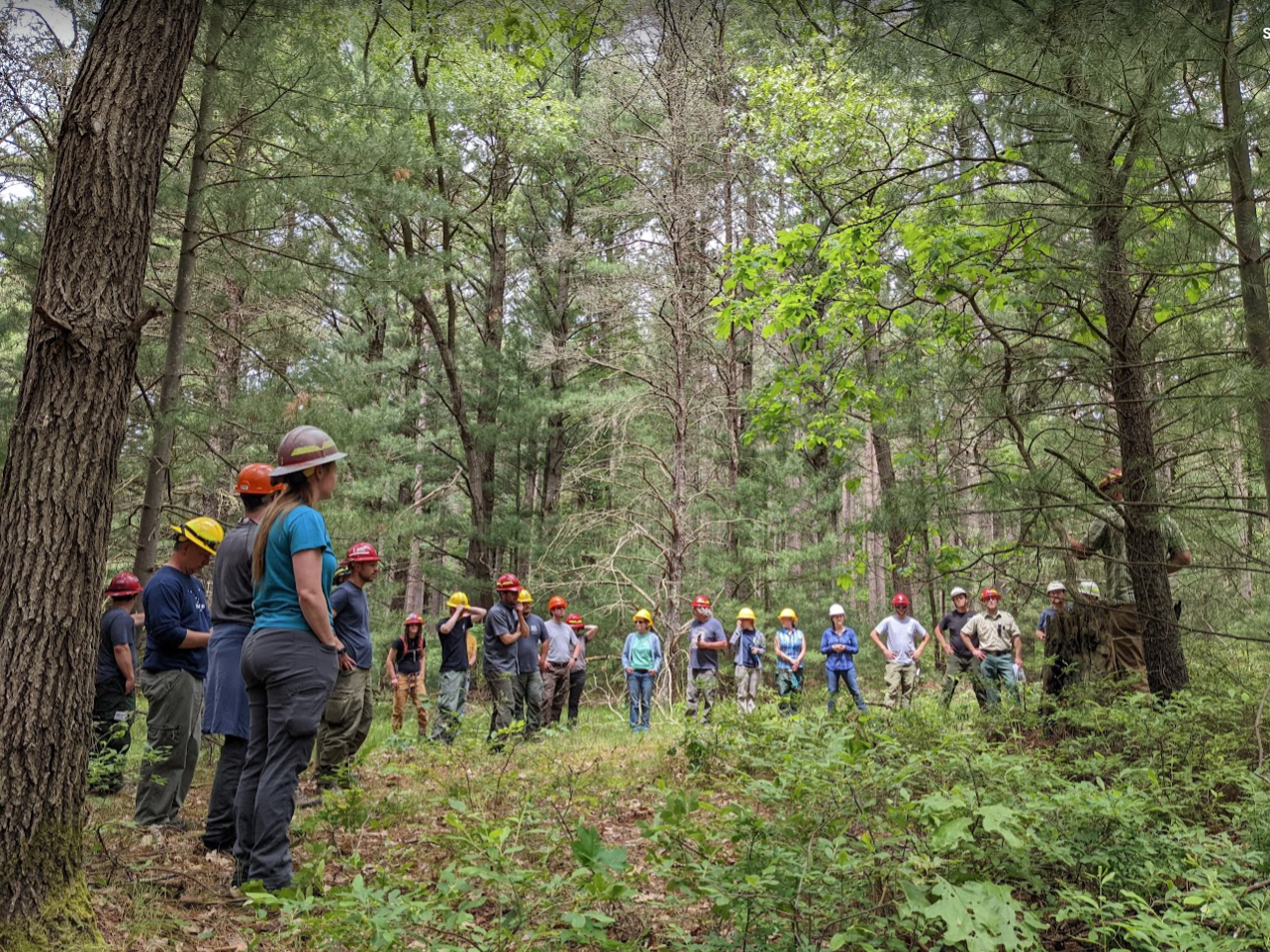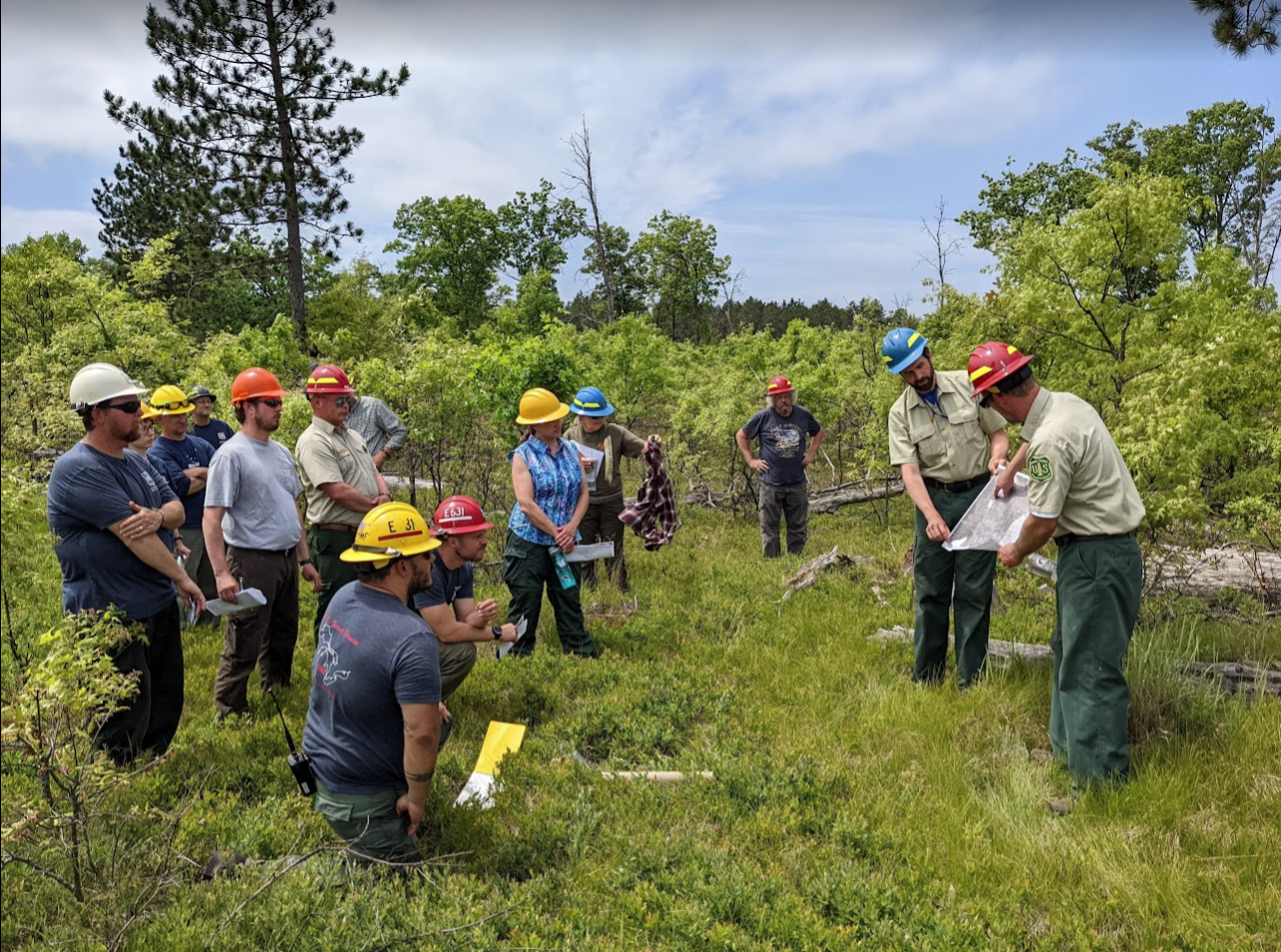On Tuesday, 14 June 2022, a field tour was held on the Huron-Manistee National Forest southwest of Cadillac, MI to discuss fire-scar derived historical fire regime information in red pine-associated natural communities, and to identify gaps in knowledge related to applying this information to modern fire and natural community management. Fire-scar fire history along with other disturbance factors is what shaped the historical fire-dependent and resilient landscapes. The Huron-Manistee Nat’l Forest (HMNF) is one landscape in the Upper Great Lakes region where there are still many remnant trees or stumps that can provide additional pieces of the historical puzzle of fire frequency and seasonality.
Photo by Lane Johnson, Forest Researcher | Cloquet Forestry Center
Mike Stambaugh (University of Missouri, Center for Tree-Ring Science) and Daniel Dey (USFS, Northern Research Station) served as co-leads along with Mark Shermak (HMNF). Keith Konen and Brian Stearns ( HMNF) and Jack McGowan-Stinski (Lake States Fire Science Consortium) were involved with planning and logistics. Additional fire history insights were shared by Kurt Kipfmueller (University of Minnesota-Twin Cities, Department of Geography) and Lane Johnson (University of Minnesota Cloquet Forestry Center).
Photo by Lane Johnson, Forest Researcher | Cloquet Forestry Center
This is the first of three fire history field tours organized in 2022 through the Lake States Fire Science Consortium, one each in Michigan, Wisconsin, and Minnesota. The field tours are part of a larger collaborative effort by tree-ring fire history specialists to provide place-based opportunities for knowledge exchange related to interpreting tree-ring-based fire scar records and applying these eco-cultural records to forest stewardship.
The long-term goal is to assemble a manager’s handbook describing the fire history of the Upper Great Lakes region as understood through the rings of fire-scarred red pine. The handbook will explain the value of tree-ring fire scar records as a biological archive and clarify their relevance to defining present and future forest management goals and objectives.
Researcher travel was funded, in part, by the Michigan Prescribed Fire Council using funds from the White Oak Initiative grant.









